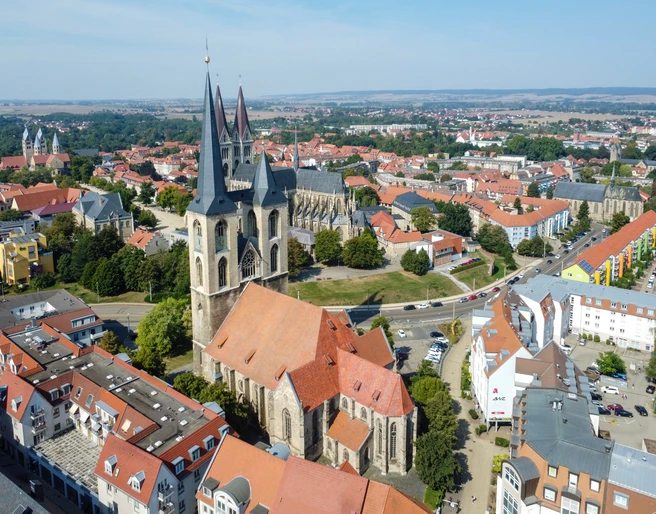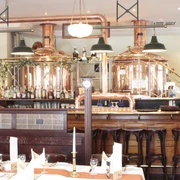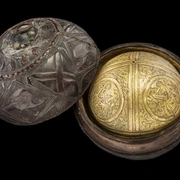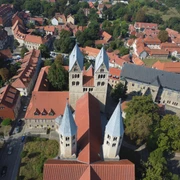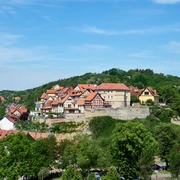Although Halberstadt has several churches that shape the city’s skyline, St. Martini immediately stands out. This is due to its towers, which are of different heights and connected by a walkway. This feature has likely always defined the church, although to this day no one knows for sure why the towers are unequal in height. One possible explanation is their original use as fire watchtowers, offering a panoramic view to quickly detect fires in the city.
Another plausible reason is that the builders ran out of money, and the second tower was never fully completed. This points to a unique fact: St. Martini was not commissioned by the clergy, but built by wealthy citizens of the town. It therefore serves as a counterpart to Halberstadt Cathedral, which was commissioned by the bishop’s seat.
According to historical sources, St. Martini was built between 1250 and 1350, although wall remnants suggest that an even older predecessor stood on the site. During World War II, St. Martini was 80% destroyed—only the outer walls of the two towers remained standing.
Thanks to a citizens' initiative, the church was rebuilt in the 1950s and retained its identity as a "citizens’ church": During the time of political change around 1989, it was a meeting place for the “New Forum” and a starting point of the Peaceful Revolution.
In terms of furnishings, St. Martini impresses with a magnificent Baroque altar, a Renaissance pulpit, a baptismal font from the Hanseatic period, and the organ façade by David Beck.
Good to know
Openings
Interior visits are possible from Easter to September: Thursday to Monday, 11:00 a.m. to 4:00 p.m. (subject to change).
The viewing platform on the Martini towers can be visited on selected dates.
The dates are published annually at www.museum-halberstadt.de/de/martinituerme.
Price info
Author
Harzer Tourismusverband e.V.
Organization
Harzer Tourismusverband e.V.
License (master data)
Harzer Tourismusverband e.V.
Nearby
